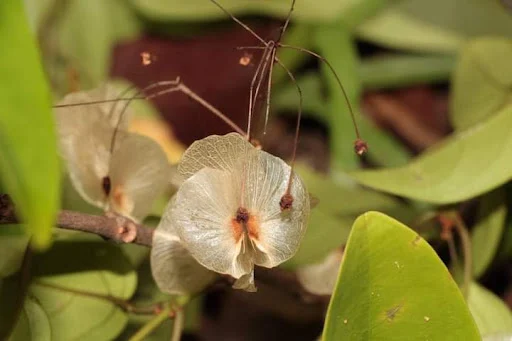Chinese perfume plant (Aglaia odorata) is a much branched shrub growing up to 5- 10 m tall. It's dwarf variety however grows only about 2-3 m high and is popular as a potted house plant. It can even be trained into a bonsai.
🌿The plant is usually grown as an ornamental hedge in gardens for its tiny fragrant flowers, and showy glossy foliage.
🌿The shiny green leaves are pinnately compound with obovate leaflets having a wide and rounded tip. These leaflets occur in pairs with a terminal leaflet larger than the rest.
⚜️Tiny yellow flowers have a citronella like fragrance and occur in a thyrse inflorescence. These mature into red, round fleshy fruits about 1-1.2 cm in size.
🌿On maturity the seeds split to reveal the brightly colored aril surrounding the seeds. Each fruit contains 1-3 seeds.The aril is edible and consumed by birds and squirrels aiding in seed dispersal.
⚜️The plant is useful in traditional medicine and is also a source of essential oil used in perfumery.
The roots are boiled with water to make a drink to increase appetite. In the Philippines, the roots and leaves are used as a tonic.
🌿A tea of the leaves is used for treating excessive menstrual bleeding and the flowers are used to ease childbirth and treatment of vertigo.The dried flowers are used to cure mouth ulcers and reduce fever.
In China, the dried branches and leaves are boiled in water and used to reduce pain from rheumatic joints, injuries from falls, superficial infections and toxic swelling.
⚜️The dried flowers retain their perfume indefinitely and can be used to produce perfume for clothes and used as air freshener pellets for cupboards etc.
Aglaia odorata dried flowers and leaves are an effective organic herbicide for controlling barn grass and weeds in fields.
Scientific name: Aglaia odorata
(Genus Aglaia is derived from the Greek word Αγλαιη which means splendour or beauty and also refers to one of the three Graces in Greek mythology. Species odorata refers to the fragrance produced by the flowers )
Common name: Chinese perfume plant
Family: Meliaceae
Native Distribution: Cambodia, China, Indonesia, Myanmar, Taiwan, Thailand, Vietnam, and possibly Laos.
References:
Picture credits: Jyoti Prateek
Reference
Plants of Singapore































































